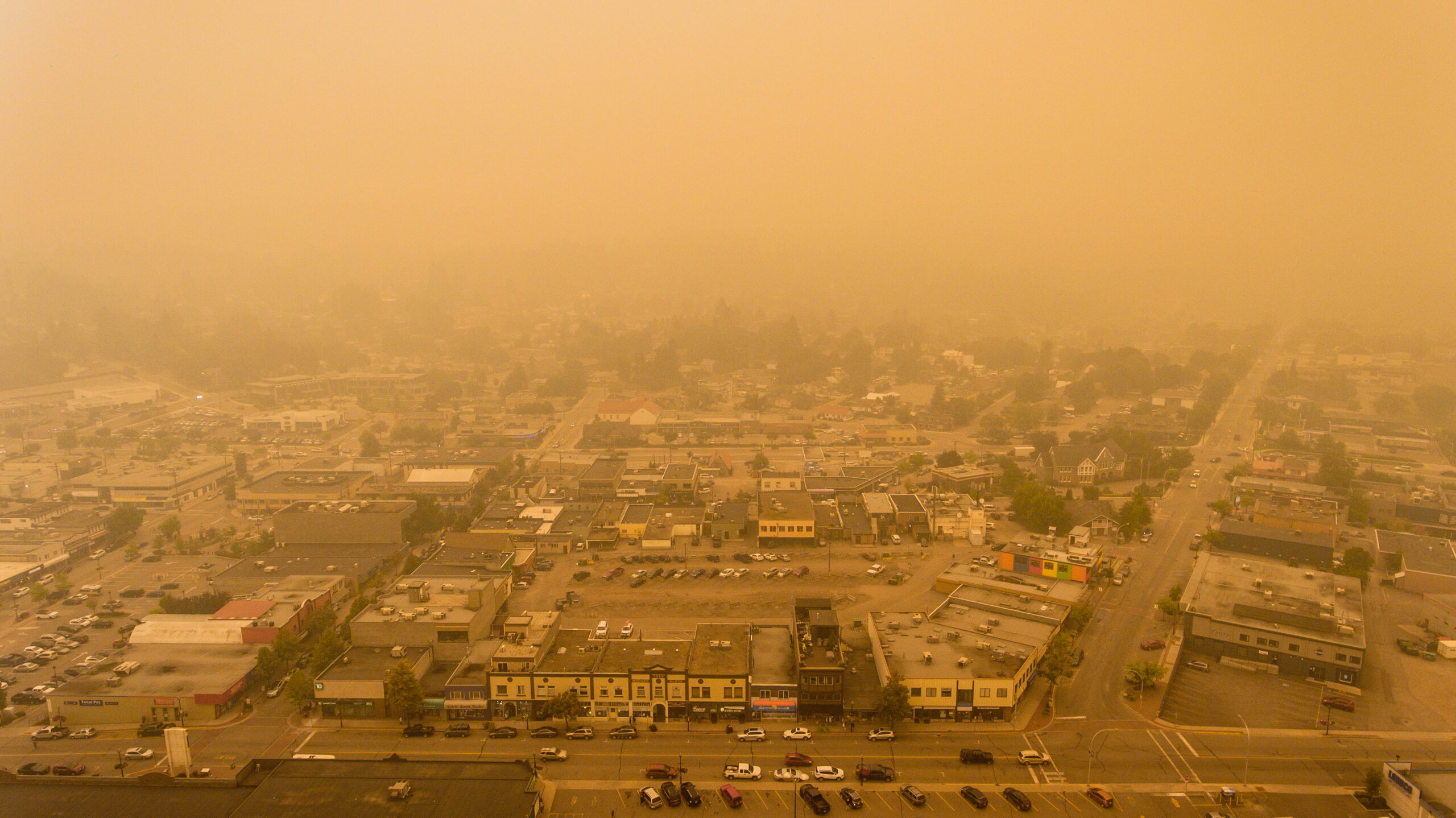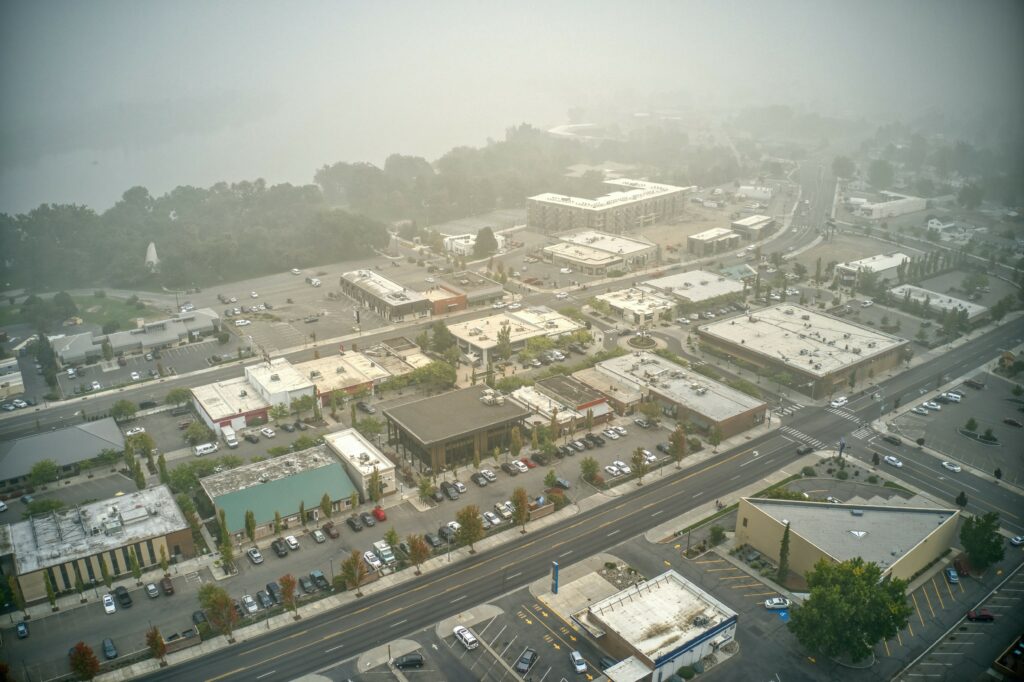
Commercial Property Insurance & Rising Wildfire Risk: New Strategies
A year and a half after the Marshall Fire destroyed suburban Colorado communities in the middle of winter, the property and casualty sector continues to grapple with rising wildfire risks. Like their personal lines counterparts, commercial property insurers are embracing AI-powered property intelligence to assess risk and protect people and property in new ways.
Just look at the Costco in Superior, roughly 10 miles east of Boulder. Shoppers there were evacuated when the Marshall blaze hopscotched its way toward the store. As one customer told the New York Times, billowing smoke made visibility so poor he only narrowly escaped flames that ripped through the road as he pulled out of the lot.
“It felt like the apocalypse,” Louisville resident Ruthie Werner told reporters. She’d gone to a local Target only to find the parking lot’s landscaping in flames. Fueled by 110-mile-per-hour winds, the blaze leveled 10,000 homes and businesses across 6,000 acres, even as forecasted snowfall threatened to freeze water pipes.
As residents and businesses in Hawaii recently discovered, even lush tropical islands aren’t impervious to devastating wildfires. In August, wildfires whipped up by powerful winds from a nearby hurricane left scores dead, sent tourists fleeing into the ocean to escape the flames, and reduced whole blocks of homes and businesses—including the entire town of Lahaina on Maui—to rubble and ashes.
“We expect rain, sometimes we expect floods,” Acting Gov. Sylvia Luke told USA Today. “We never anticipate in this day that a hurricane…would cause these types of wildfires.”
Such is the bizarre new world of wildfire risk. The most fire-prone areas throughout the American West are experiencing unrelenting population growth, as are its attendant shopping centers, office parks, hotels, and restaurants. At the same time, protracted drought conditions exacerbated by climate change extend the wildfire season year round and to unexpected places.
Blowback: The Outlook for Commercial Property Lines
What makes events like the Marshall and Maui fires so alarming is that they didn’t occur in remote forests. They ignited in two of countless wildland-urban interfaces (WUIs) nationwide—areas with residential and commercial development close to wilderness areas with little fire clearance.
In the U.S., there are nearly 50 million homes in 70,000 communities designated as WUIs at risk from wildfires, according to the U.S. Fire Administration. And climate change is only making matters worse. As a new study from the UN Environment Program (UNEP) finds, this kind of land use combined with climate change will lead to a 14% increase in wildfires worldwide by the end of this decade. In the Western U.S., they could rise 30% by 2050.
Not that we shouldn’t have seen this coming. After averaging $600 million per year for most of the past two decades, insured wildfire losses over the past two years totaled more than $10 billion, according to Swiss RE. In Western states, it’s worse. Ten of the costliest wildfires in U.S. history occurred in California between 2017 and 2020, including the devastating Tubbs Fire. The price tag: More than $4 billion in commercial property loss for insurers.
As the frequency and severity of wildfire-related claims continue to climb, underwriters writing business in commercial property lines should factor the following into their risk strategies.
Inflation Could Cost More Than You Think
If wildfire risks aren’t bad enough, they’re set to grow more costly amid heightened inflation. According to PropertyCasualty360.com, Zurich North America estimates current building costs trends in areas seeing the most commercial and industrial development could see building costs rise 10% to 15% this year.
According to Bankrate.com, the $4.2 billion in estimated losses from the 2018 Woolsey Fire in California would already cost more than $4.36 billion today.
And while the broad consumer-price index went up 6.4% this past January compared to a year earlier, the Wall Street Journal reports that inflation’s impact on building and labor costs for commercial properties cannot be overstated. Roofing materials, for instance, are up 13%, while the cost of hiring roofing contractors has climbed 21%—while the price of the diesel in their trucks is up 60%.

Likewise, if valuations on insured properties are not up to date or are significantly understated, carriers could be hit hard in the event of a wildfire. After all, a 1% miscalculation didn’t mean much when inflation rates were marginal at best. Now, it could add serious insult to very costly injury for commercial insurers. As a result, current, accurate valuation will be critically important.
As PropertyCasualty360.com points out, property monitoring can also be a value-add to commercial line customers. After all, risk managers must maintain adequate coverage on the properties they have exposed. Insurers providing that kind of property condition intel can become valuable partners.
Mitigation Efforts Should Be Incentivized
By advising businesses to become more resilient against wildfire and other weather-related catastrophes, insurers can move even further from repair-and-replace operating models to proactively protecting commercial business and habitational properties while reducing claims frequency and severity.
Premium reductions in exchange for mitigation measures can incentivize policyholders while supporting insurers’ ability to protect their customers. In fact, rewarding policyholders for taking steps to protect their properties from the ravages of wildfire isn’t just a good idea. In California, it’s also the law.
Under the state’s new Safer from Wildfires framework, insurers operating in California must now provide discounts to homeowners and businesses undertaking substantive wildfire mitigation efforts. These can include installing a fire-resistant roof, clearing vegetation with 10- to 30-feet of “defensible space”, or deploying IoT sensors that detect wildfires at the smoldering stage and automatically alert firefighters.
Our own data bears out the effectiveness of such measures. Using high-res geospatial imagery, CAPE recently produced a study that found that in high-fire-risk areas, homes with 30% vegetation coverage within 10 feet of the dwelling had 115% higher wildfire claim frequency and a loss ratio 272% higher than homes with 10% vegetation within 10 feet of the home. Incentivizing wildfire mitigation efforts could pay serious dividends for insurers and commercial property owners alike.
Your Risk Models are Obsolete
As McKinsey points out, insurers can always use their annual policy cycle to reprice portfolios to avoid long-term exposure to wildfires and other climate risks. But how do you do that when the historical data they use to calculate that risk is based on a climate system in flux?
Some commercial property insurers have moved to offering only E&S lines. Others have pulled out of WUIs completely. This spring, two major insurers announced they would no longer write new residential or commercial policies in California due to wildfire risk.
However, the commercial property sector is expected to top $1.6 trillion worldwide by 2030. Retreating from booming markets isn’t especially prudent—and insurers can only spike rates so high. So how can they operate profitably?
Commercial Property Intelligence is Key
According to McKinsey, insurers must invest in technological solutions that help them gain a current and accurate understanding of evolving risks to price it profitably or avoid it altogether.
Property intelligence may prove essential to achieving that. Using our new Wildfire Intelligence Suite for Commercial Property as an example, we combine cutting-edge geospatial AI, the highest high-resolution, multi-sourced aerial imagery available, and the scale, speed, and accuracy of our overlaid analytics in a single solution to help insurers navigate the new realities of commercial wildfire risk.
With up-to-date property vulnerability data on more than 100 million buildings across the U.S. and Canada, commercial lines insurers and other stakeholders can access valuable property attributes with the accuracy and detail that typically requires an on-site inspection—but immediately and at scale.
In addition to efficiently and accurately assessing exposure to wildfire and many other perils, insurers can use our solution to recommend and verify wildfire mitigation efforts such as defensible space around structures—and the quantified impact such actions will have on both risk and rate.
Just as importantly, they can gain clear visibility on the changing risk landscape to strategize responses to evolving exposure—and the impact on their own assets.
In a time when the threat from wildfire grows by the day, understanding evolving risks can be challenging. But it’s not impossible. With the right property intelligence, accurately identifying risks could make all the difference in protecting commercial property in a changing world.
To learn more about CAPE’s Wildfire Intelligence Suite for Commercial Property, schedule a demo today.
Aggregate Statistics Created Using Data Produced from Nearmap Imagery